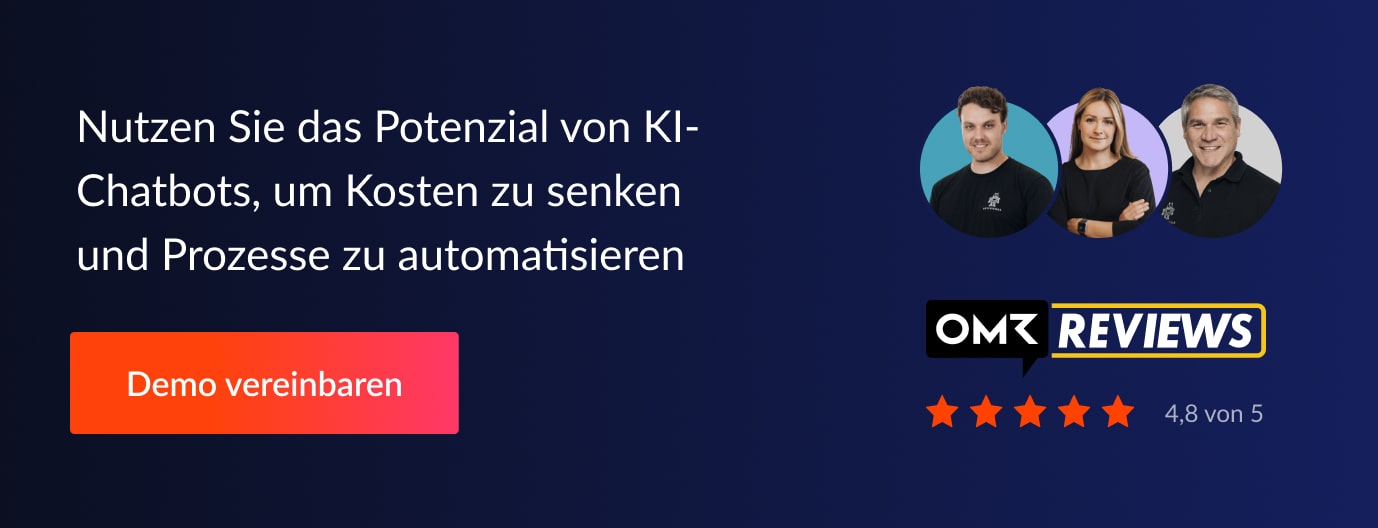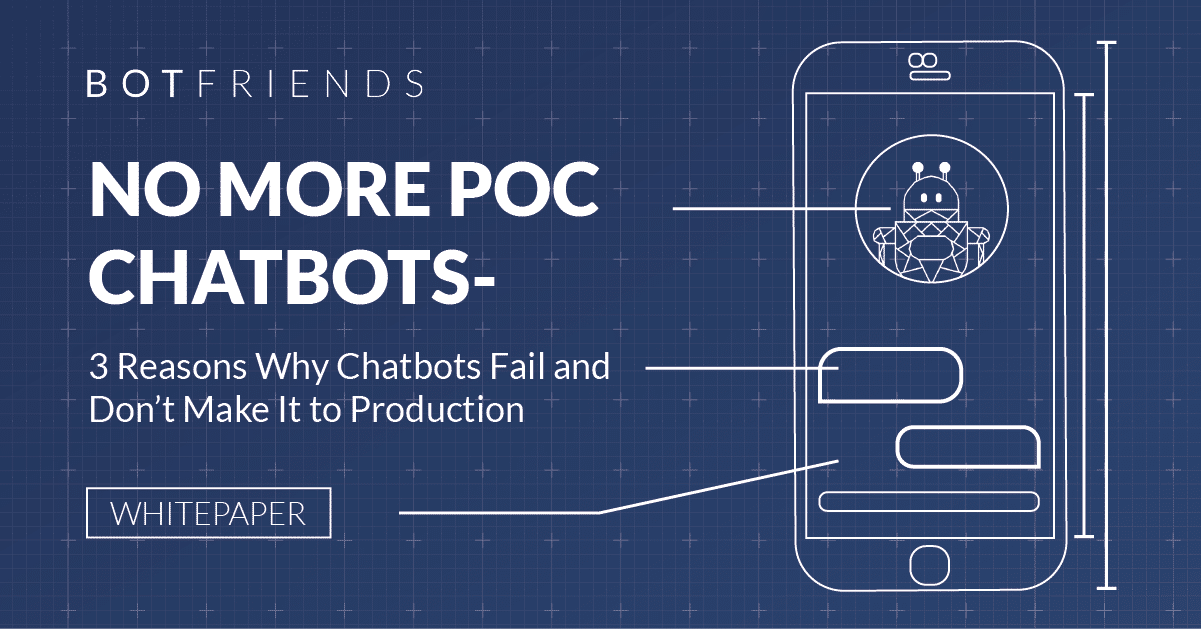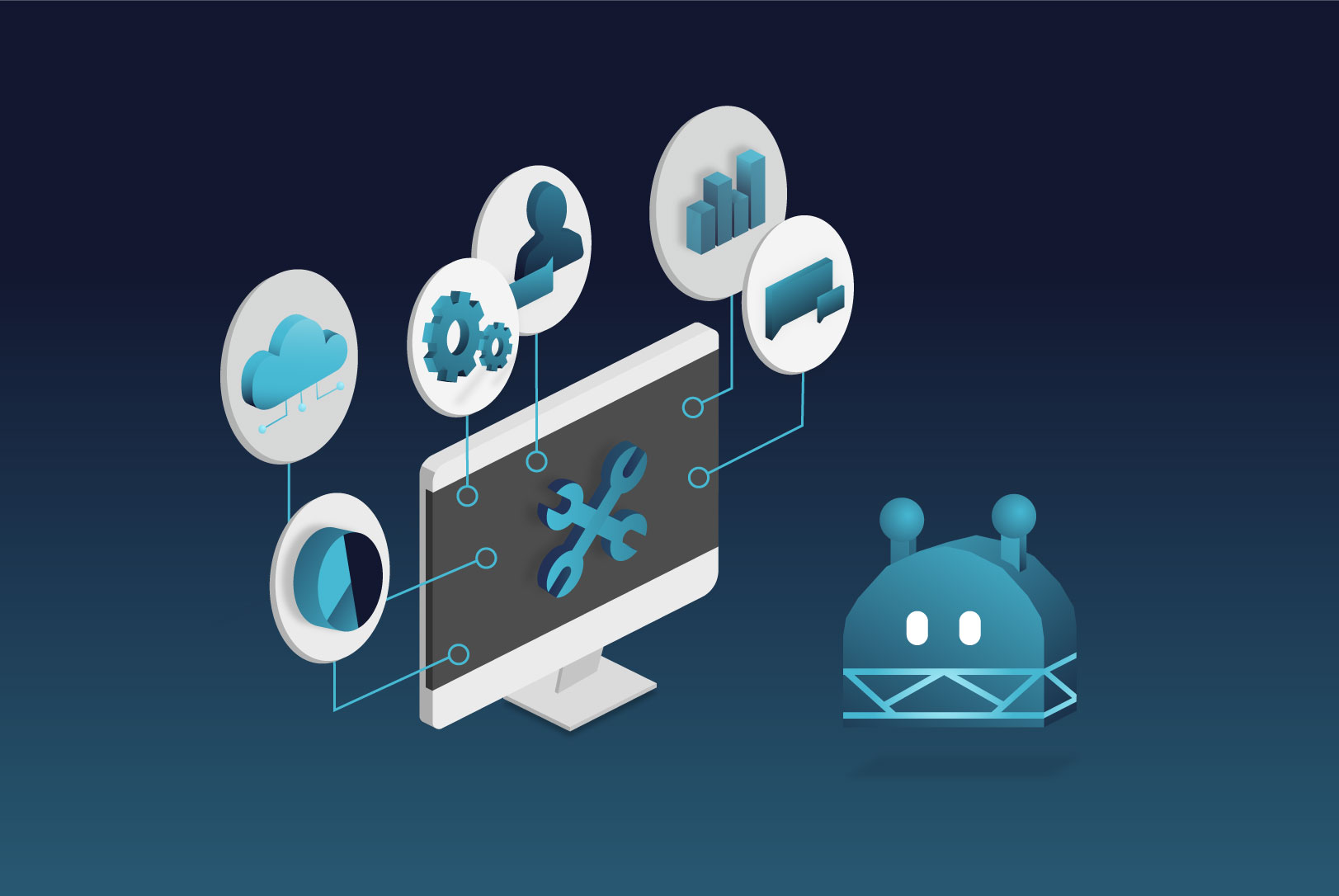Chatbots for Enterprises - How Dialogflow can be complemented ideally
Chatbots are no longer a unique selling point. Many large companies have digital assistants(Handelsblatt). It is becoming increasingly important to stand out creatively from one's competitors. Real examples show that the use is often not unproblematic:
A technology company wants to enable its customers to repair products on their own. Since these repairs are time-consuming and complex, a Dialogflow-based chatbot is to support the customers. The problem is that Dialogflow reaches the maximum session limit after 30 minutes and users receive a response timeout after just 5 seconds without a response. In practice, this means that the customer has to start a new session with the chatbot every time he or she completes a repair step. All contexts are lost and customers have to tell the chatbot their request again. This is very frustrating for customers and takes up a lot of their time. Good customer service looks different.
In this article we look at what makes Dialogflow so powerful and why it still does not meet the demands of large companies. We also consider additional components that are needed to develop a chatbot for Enterprises.
What is Dialogflow?
Dialogflow is a development platform from Google that enables interactions between humans and machines in the form of conversations. The core competence of Dialogflow is natural language understanding (NLU) and natural language processing (NLP). On the platform, it is possible to create simple chatbots (e.g. FAQ agents) without programming knowledge.
Developers often refer to CAI (Conversational Artificial Intelligence) systems such as Google Dialogflow, IBM Watson or Microsoft LUIS as black boxes. With these systems, it is not clear which algorithms the platform is based on.

What is not possible with it
User:in administration works only conditionally with Dialogflow, there are only two possible roles: Developer:in and Reviewer:in. This makes training the chatbot and managing content more difficult, which can become very cumbersome in complex company structures. Viewing past chats is only partially possible, references to previous conversations are not established and a possibility to hand over the conversation to employees is missing. Due to a limited range of functions, special requirements such as sending push messages or using custom functions are not possible, or only possible to a limited extent. This also applies to system connections to SAP, CRMs (Customer Relationship Management) or ERPs (Enterprise Resource Planning), for example, to trigger orders or other actions automatically.
Let's build a chatbot
So what do we need now to address these shortcomings, close gaps, and build an enterprise-grade chatbot? Four components should strengthen our foundation: an easy-to-understand content management system (CMS) with mature user management, developer interfaces for easy integration into our own systems, a submission tool foremployees, and a sophisticated back-end for comprehensive control over the chatbot.
In addition, we add more features: more detailed analysis tools, the ability to implement channels such as WhatsApp, and the ability to manage content on all channels simultaneously. This gives us a scalable middleware platform that combines a large number of services and can include numerous parameters.
Why Dialogflow is nevertheless often the best solution
The core, however, remains. Human language must be recognised and processed by computer programmes. For this, we need a system that can recognise and process natural language as well as possible. Correctly recognised: Dialogflow.
NLU and Machine Learning processes at Dialogflow work very well even with several thousand input and output options and include different languages. Integrations are enabled with the help of developer:inside interfaces (APIs). All in all, this makes it one of the best artificial intelligence and speech recognition services. Combine this capability with the above components, and we have a comprehensive and powerful enterprise chatbot platform.
When do we need an enterprise chatbot?
For simple dialog systems, such as question-and-answer scenarios or after-sales surveys, the functionality of Dialogflow is probably sufficient. For more complex applications, however, the requirements of large companies can no longer be met. In this case chatbot platforms with middleware approach are a suitable solution.
Ask yourself the following questions: Is a simple chatbot enough for us? What goals are we pursuing with it? Will these goals be achieved with it?
BOTfriends offers a comprehensive enterprise solution for chatbots. The platform BOTfriends X allows you to create your own chatbot for large projects within a few minutes and offers versatile possibilities to relieve employees and increase customer satisfaction.
If you want to know more about choosing the right software and integrations for an enterprise chatbot, get our white paper "No more POC":




